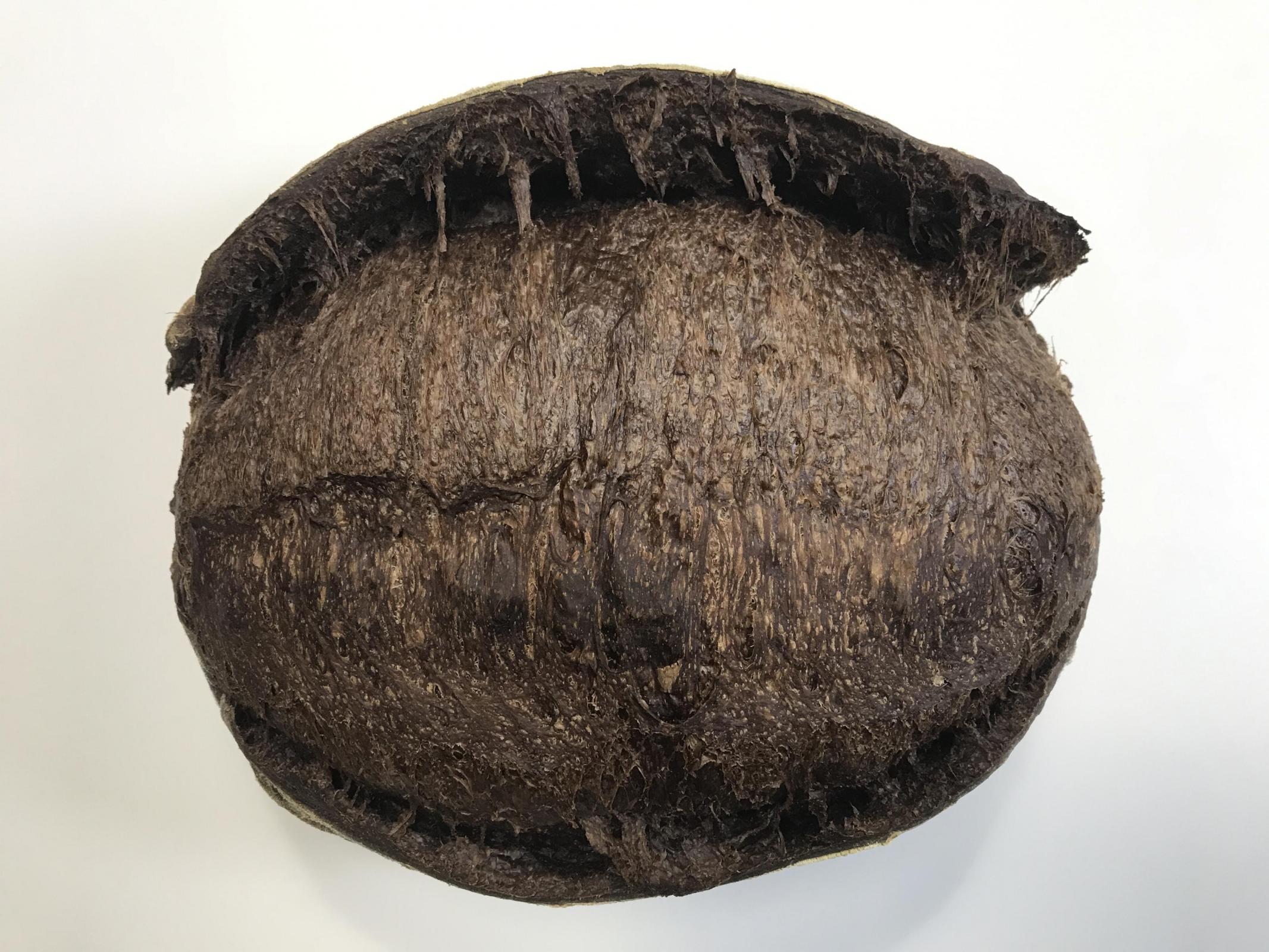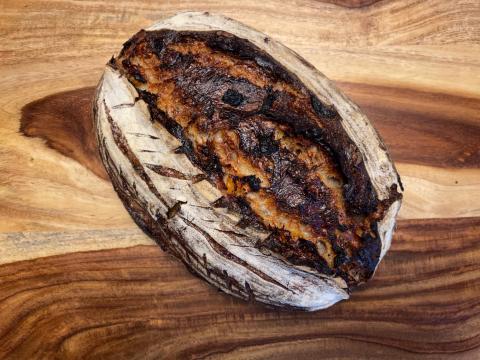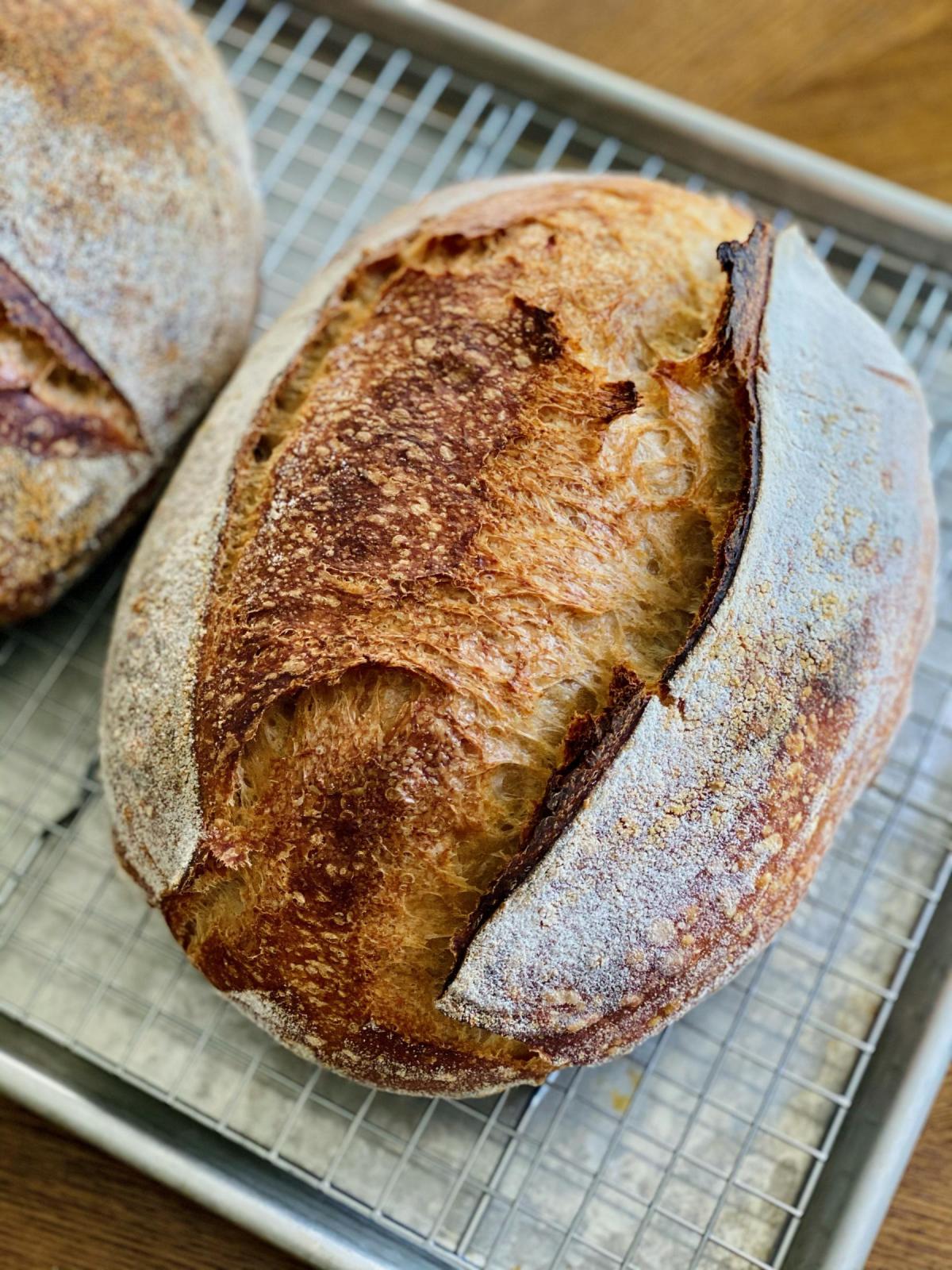I’ve wanted to do another fruit and nut bread for a few weeks and decided to finally see how apricots and walnuts would do together. I loved the rum soaked fruits I’ve done in the past so decided to rum soak the apricots overnight. Toasted walnuts are always better than raw and finally to see if I could amp up the walnut flavour I added some walnut oil as well. I tried another decorative score, of course my lack of practice and artistic talents impair the outcome. I also think that perhaps a fruit and nut laden loaf may not be the best vehicle for this type of decorative scoring.
For one 900 g loaf 80% hydration (2 loaves)
311 g white bread flour. (622)
46 g whole wheat flour. (92)
21 g dark rye flour. (42)
274 g warm water, then (548)
21 g water for mixing later (42)
7.5 g salt (15)
2 g diastatic malt powder 0.5% (4)
12.5 g Walnut oil 3%
77 g levain (154)
Total flour 416.5 g
76 g dried apricots 20% chopped soaked in rum overnight
76 g toasted walnuts 20%
Double batch 152 g each
Final dough weight 906 g
Levain build 1:6:6 for overnight 74ºF
6 g starter + 38 g water + 38 g red fife
Overnight saltolyse
Add walnut oil at the end of mix by drizzling over and stretch and folding.
Bulk Fermentation 80-82ºF
Add levain to dough, pinching along with hold out water, Rubaud for a few minutes then 500 French folds fully develop gluten. Then stretch and fold to add walnut oil.
- + 30 min Bench letterfold, set up aliquot jar
- + 30 mins Lamination. Place dough on wet counter and spread out into a large rectangle. Spread walnuts and cranberries on the dough in thirds.
- + 30 min Coil Fold
- + 30 min Coil Fold
- + 30 min Coil Fold
- + 30 mins Coil Fold
- + 30 mins coil fold
- + 45 mins coil fold
End of BF - Shaping aliquot jar 60% or greater - the bench rest until aliquot 70% or greater.
Retard Overnight
Bake
Preheat oven 500ºF with dutch oven inside
Once 500ºF remove dough from banneton and score as desired.
Transfer to dutch oven placing the lid on top place in over lower ⅓ of the oven. Turn oven temperature to 450ºF. Bake for 20 mins. The drop temperature to 420ºF and continue to bake for 10 mins lid on. Then remove lid and continue to bake in the dutch oven lid off for 10 mins further. Remove bread from dutch oven and bake directly on the oven rack for another 10-20 mins until fully baked.























